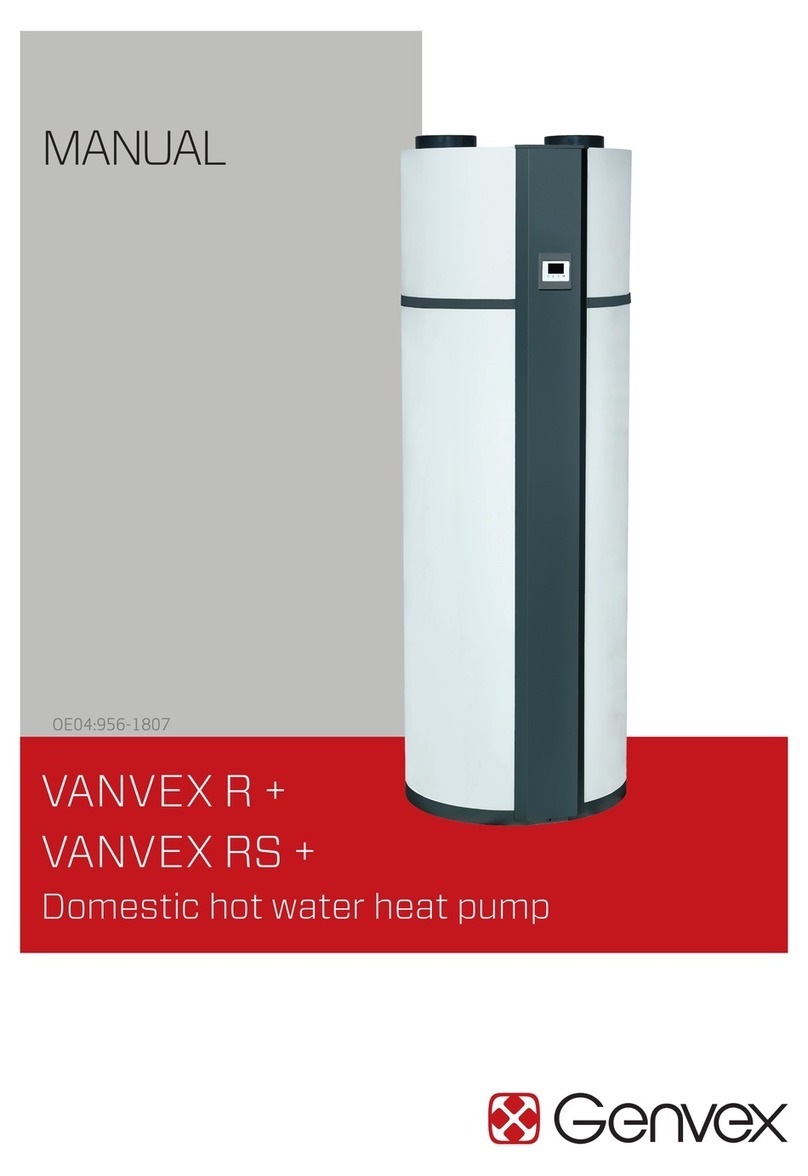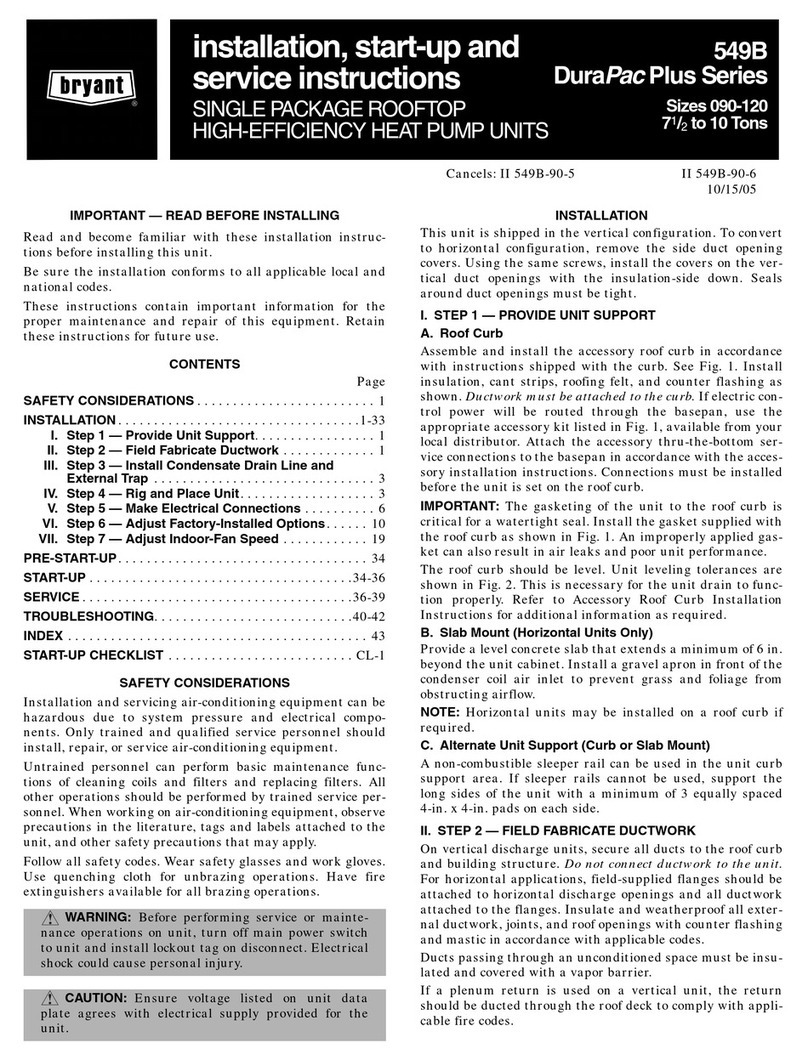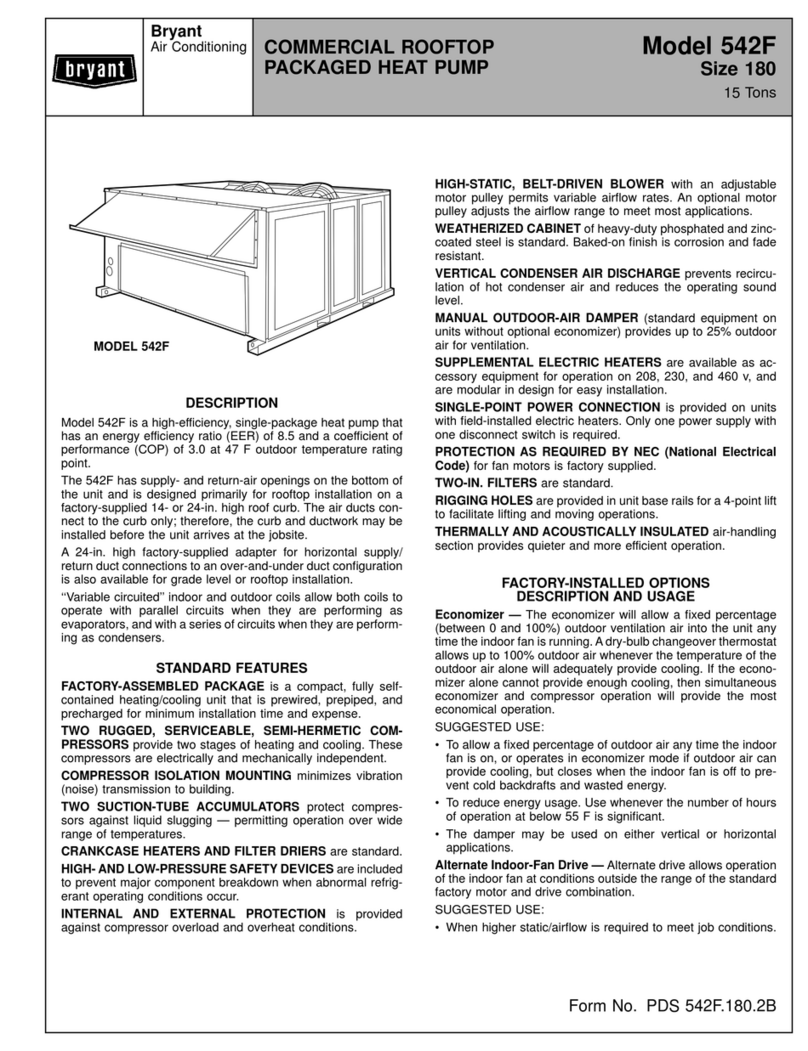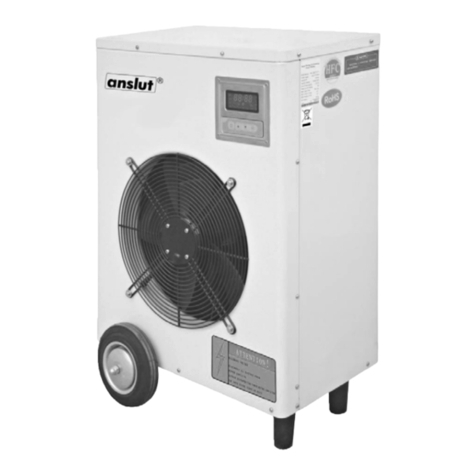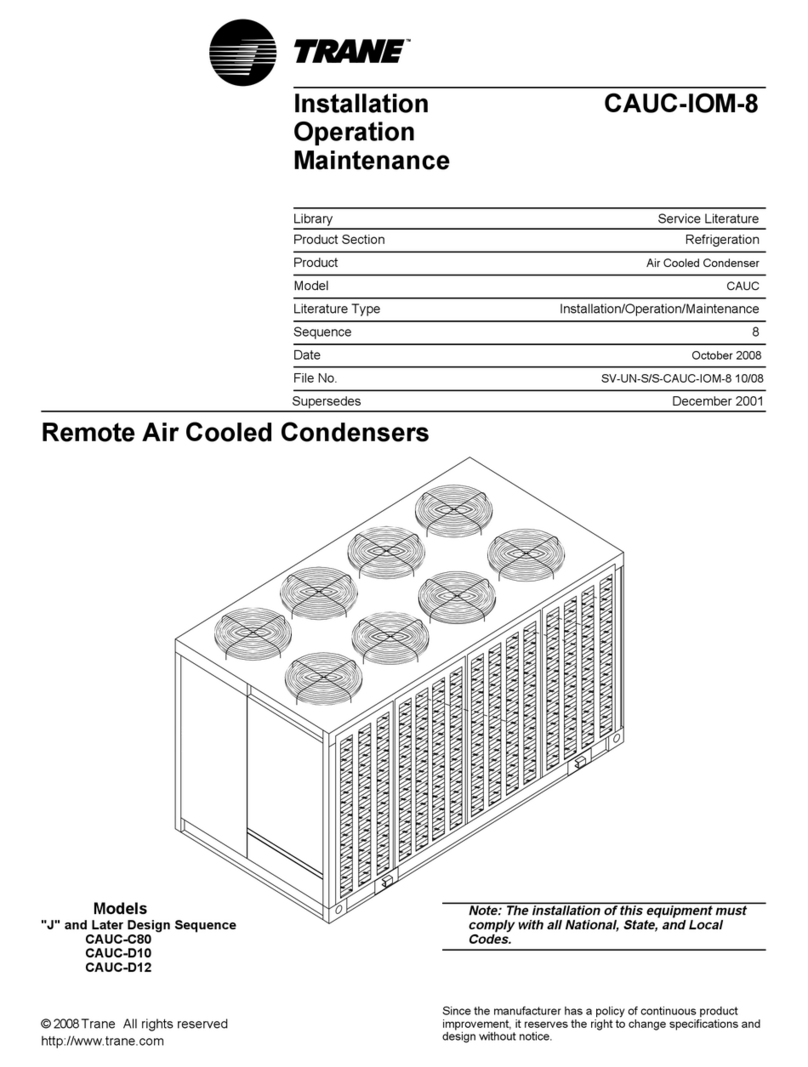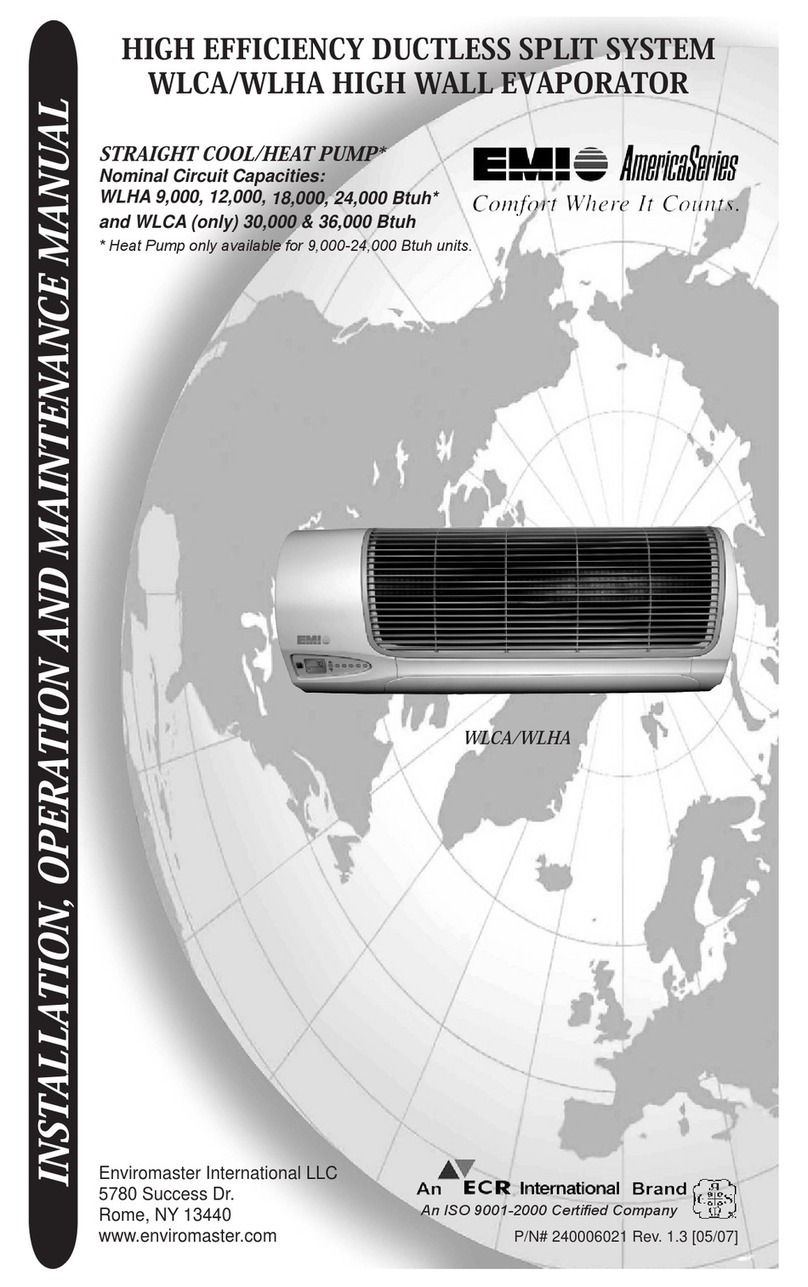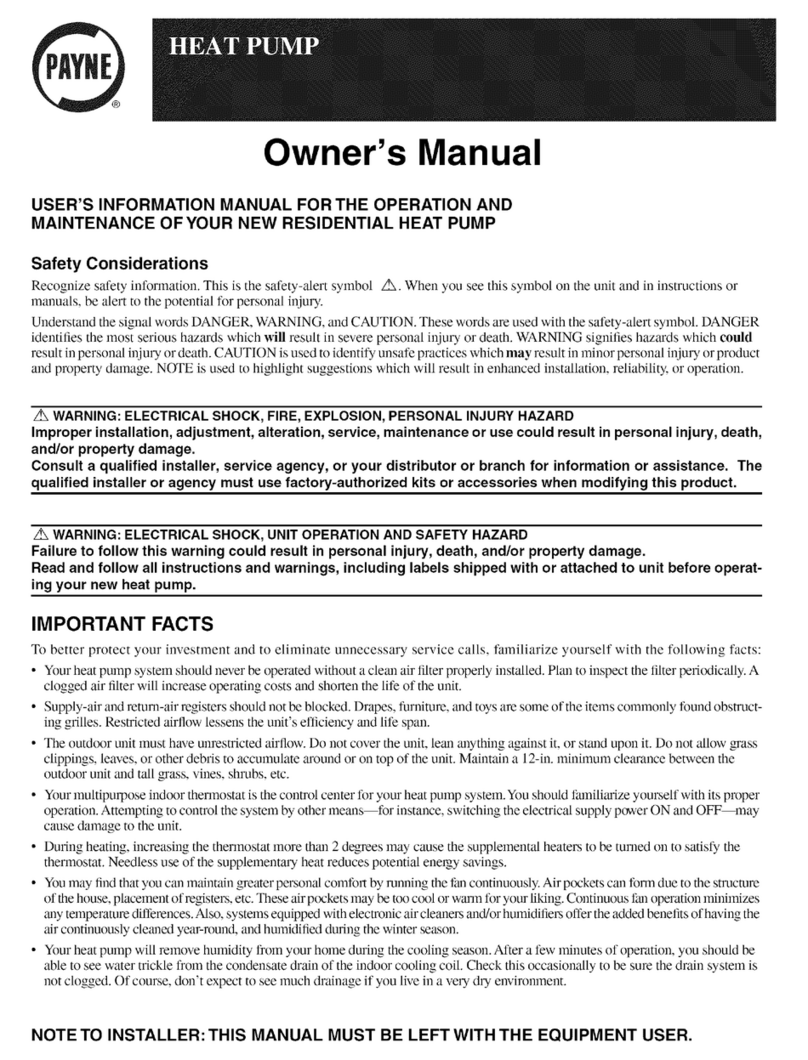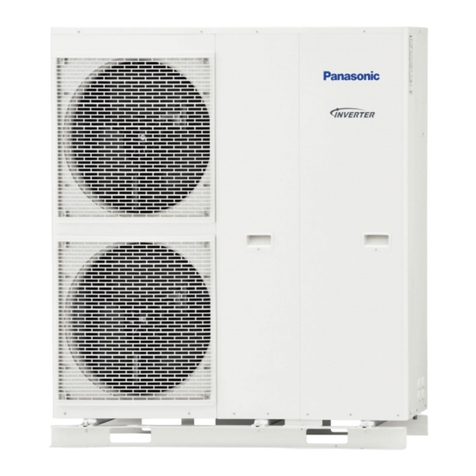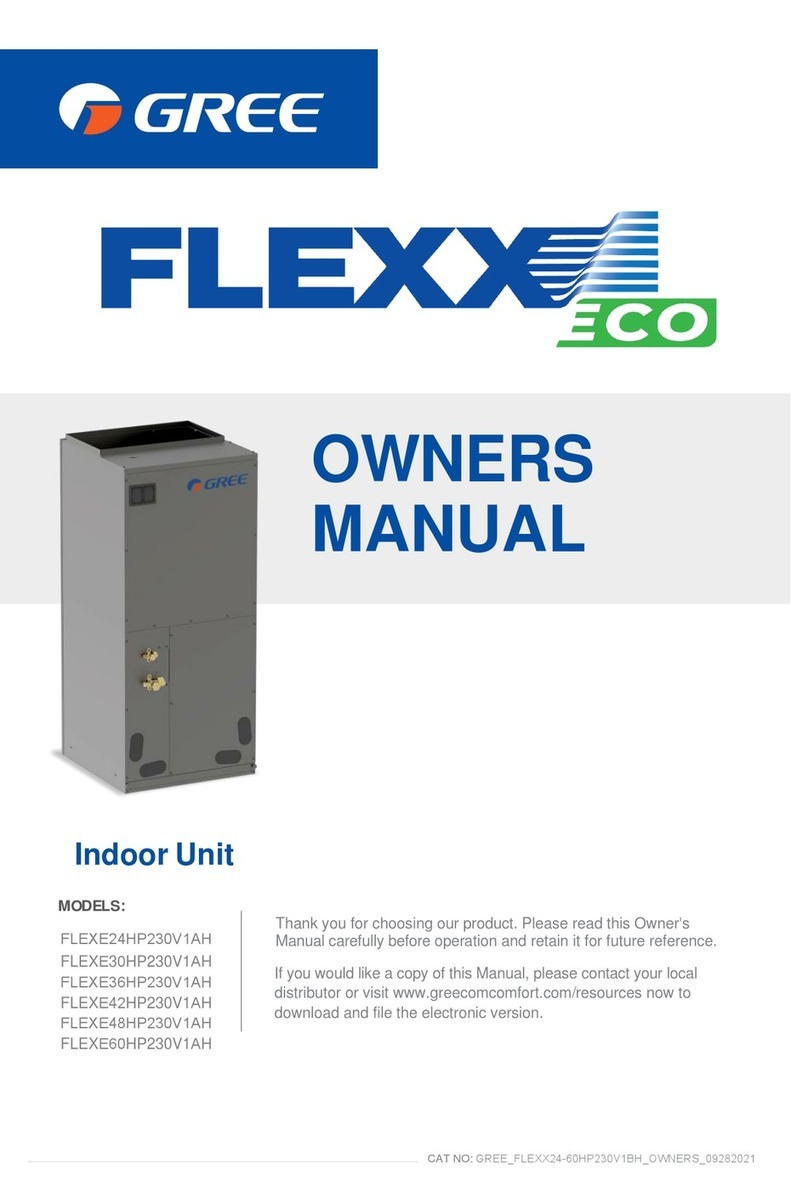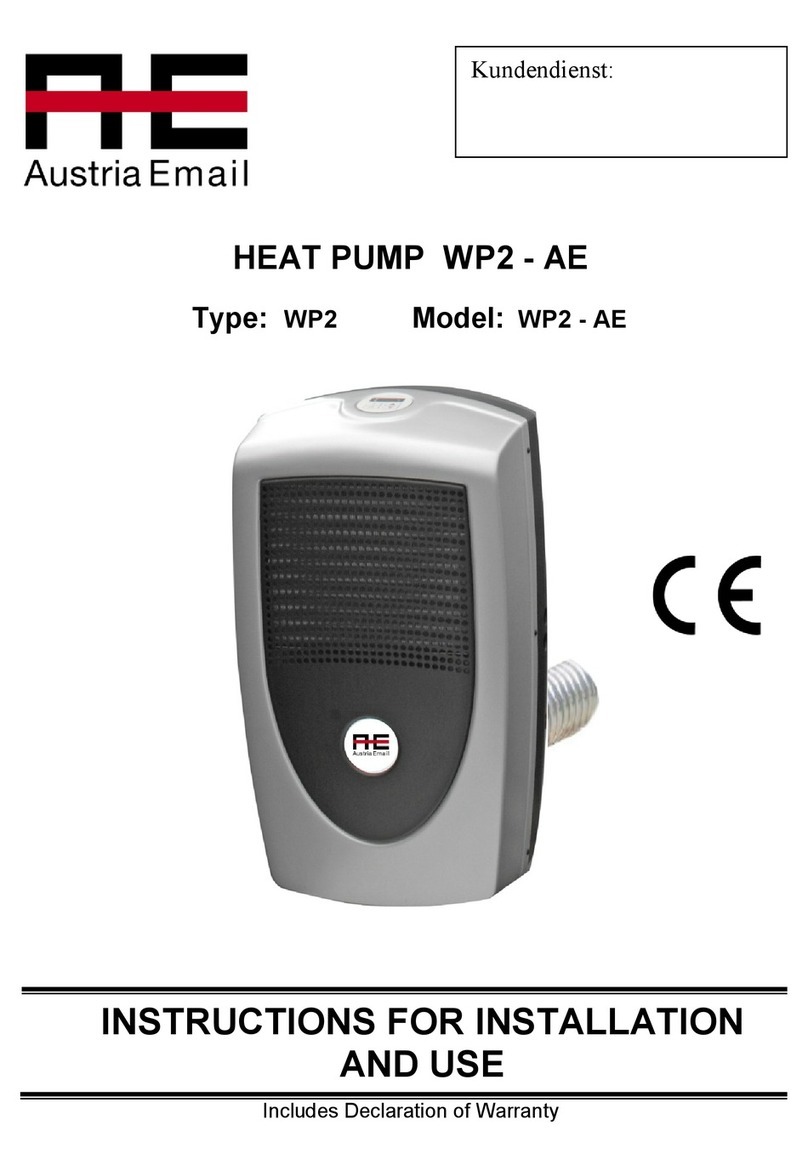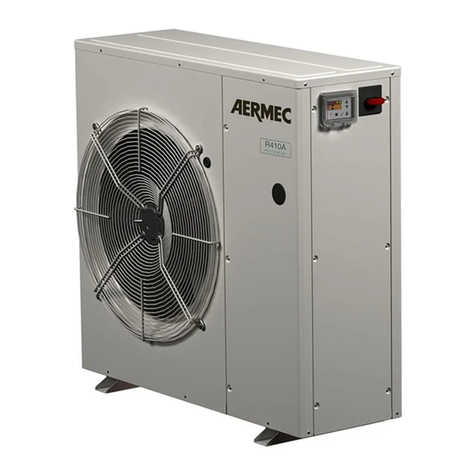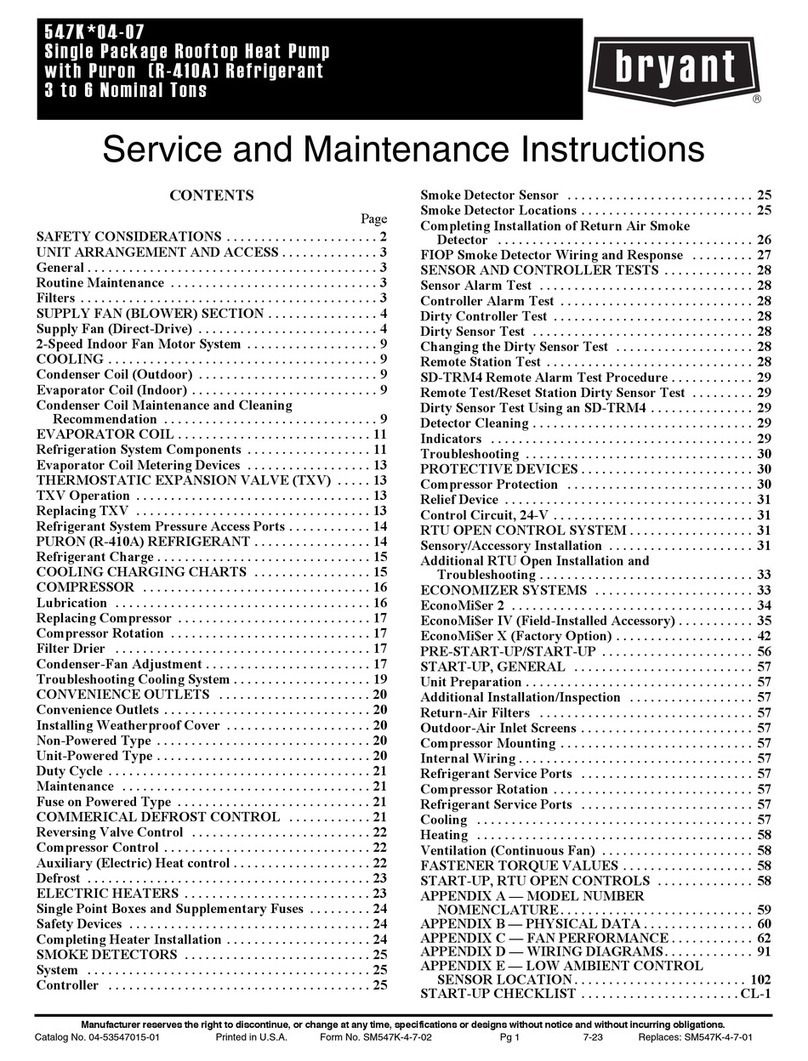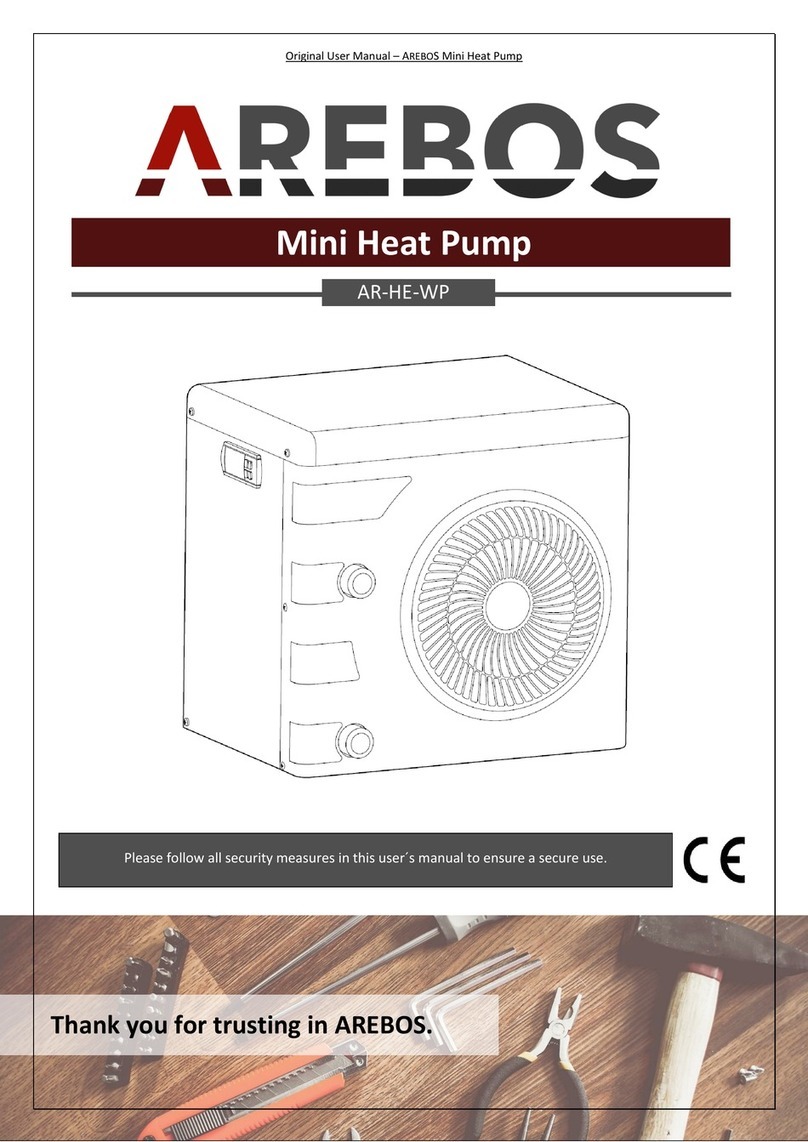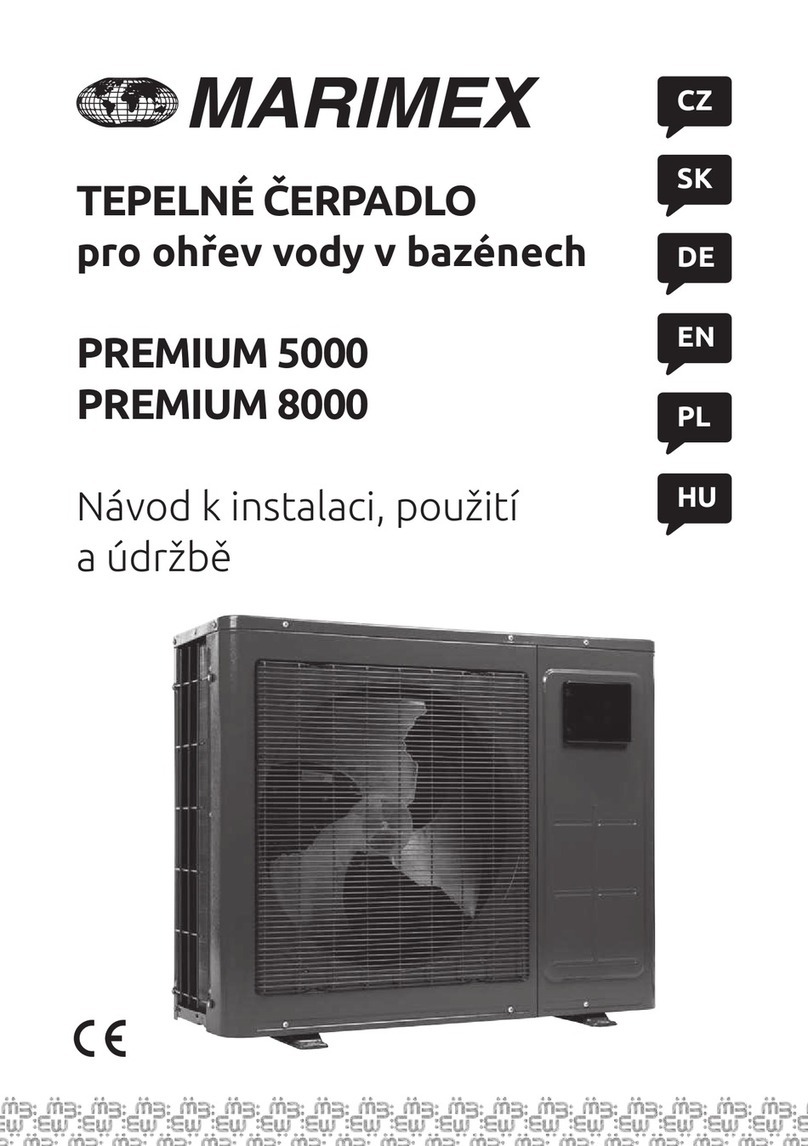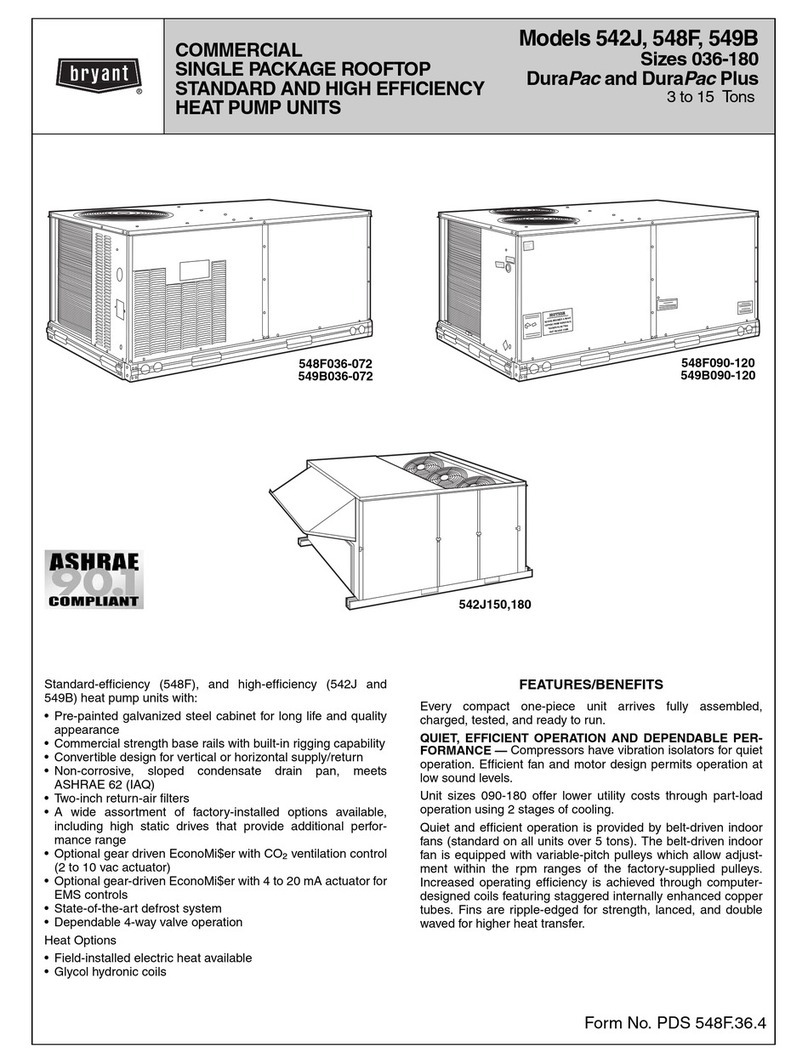Genvex PREMIUM PREHEAT 250 User manual

INSTALLATION
MANUAL
PREMIUM PREHEAT 250 , 300, 500
Air-air heat recovery ventilation heat pump

2
Set-up........................................................................................4
Duct connection.........................................................................5
Duct system...............................................................................5
Condensation drain ...................................................................6
Insulation of ducts in cold attics.................................................6
Insulation of ducts in warm rooms.............................................7
Electrical connection..................................................................7
Starting up the unit ....................................................................7
Optimal adjustment of the ventilation system............................8
Maintenance of the system........................................................8
Trouble-shooting......................................................................10
PCB layout...............................................................................11
Electrical diagram....................................................................12
Cooling circuit..........................................................................13
EC Declaration of Conformity..................................................14
TABLE OF CONTENT

3
.IMPORTANT .IMPORTANT .IMPORTANT .OMPORTANT .IMPORTANT.
.IMPORTANT .IMPORTANT .IMPORTANT .OMPORTANT .IMPORTANT.
When installing a Premium Preheat unit,
the instructions below must be followed:
1) Check that the unit is level.
2) Installairtightwatertrapsinafrost-freelocation
to compensate the pressure of the valve.
3) The height of the water traps must be at least
100 mm.
4) Ensure that the condensation pipe is inclined
all the way from the unit to the drain.
5) Pour some water into the condensation tray of
the unit to ensure that it ows out freely.
6) If the water trap is tted in a place where there
is a risk that the temperature drops below
0°C, then an electric heating element with a
thermostat protects it against freezing by
turning on when the temperature drops below
+2°C.
7)Adjustmentofsupplyairandextractairvolumes
must be made before the ventilation system
may be taken into use. It is important that there
is a balance between the supply air and extract
air volumes.
8)Closingthe ceilingvalvesetc.is recommended,
until the ventilation system is started up.
GENVEX A/S may not be held liable for any
consequential damages, which have nothing to
do with the GENVEX unit.

4
D
E
F
C
1
2
3
4
B
A
3
2
1
5
C
D
4
6
7
8
A
B
2
Revision:
Kg
Vægt:
Betegnelse:
Tegn. Nr.:
Blad 1 af 1
A3
275.08
014007
Proxon WP 630 H
General tolerance hvor intet andet er angivet: ISO 2768-m
Skala:1:10
Revisions Dato:
12-03-2013
14:17:15
Lokation:
Produkter:
Proxon WP 630
Revision By:
RJE
D
E
F
C
1
2
3
4
B
A
3
2
1
5
C
D
4
6
7
8
A
B
2
Revision:
Kg
Vægt:
Betegnelse:
Tegn. Nr.:
Blad 1 af 1
A3
275.08
014007
Proxon WP 630 H
General tolerance hvor intet andet er angivet: ISO 2768-m
Skala:1:10
Revisions Dato:
12-03-2013
14:17:15
Lokation:
Produkter:
Proxon WP 630
Revision By:
RJE
Front view
Set-up
Premium Preheat is a reversible heat pump that can be
supplied with the supply air in the right-hand side (as
shown)orintheleft-handside.Theelectricalboxislocated
on the top of the unit. The electrical box is located on the
top of the unit.
The unit has 2 condensation drains, both of which must be
connected to a suitable drain.
The unit must be placed on a solid surface, so that
vibrations from the unit are not transmitted in ceiling and
walls.
The condensation drains must be supplied with the
necessary water traps, and condensation hoses/pipes are
to be placed frost-free and led to the inside drain.
During the winter months the unit can give o 5-8 litres of
condensation per day.
In order for service and maintenance of the unit to be
carried out, there must be at least 600 mm clearance
in front of the unit, as well as a solid surface, such as a
walkway. If the unit is in an attic, there must be free access
from the door or hatch.
It is highly advisable to place the unit under the roof or in
the attic.
Side view
Fresh air
Supply air
Extract air
Exhaust air

5
3 m
1 m
3 m
Indblæsning
Supply Air
Zuluft
Udsugning
Extract Air
Abluft
Afkast
Exhaust Air
Fortluft
Friskluft
Incomming Air
Frischluft
Duct system
It is recommended that the ventilation duct system is
made of spiral ducts with rubber ring seal ttings so as to
provide a tight and durable duct system.
There are also other duct systems: Flat metal ducts and
plastic duct systems.
To obtain a satisfactorily low noise level from the unit,
silencers must always be mounted on the supply air and
extract air ducts between the unit and the rst supply air
and extract air valves. A silencer on the exhaust air duct
is also recommended.
To prevent the transmission of sound from one room
to another, we recommend always installing a silencer
between the two rooms.
It is recommended that the air speeds in the ducts be
dimensioned low enough so that there is no noise from
the supply air and extract air valves.
When positioning the fresh air and exhaust air roof cowls/
grills,
make sure that the two air ows do not intercept causing
exhaust air to be drawn in again. Minimum spacing: 3 m.
It is recommended that the fresh air grills are placed on
the north or east side of the house to ensure optimum
comfort.
Duct connection
At each duct connection there is a yellow sticker
indicating which ventilation duct is to be connected to
which bushing.
Supply air:
The duct system from the unit to the rooms.
Extract air:
The duct system from the wet rooms to the unit.
Fresh air:
The duct system from the fresh air roof cowls/external
grills to the unit.
Exhaust air:
The duct system from the unit to the exhaust air roof
cowls/external grills.

6
Friskluft
Afkast
Udsugning
Indblæsning
Lufttæt samling
100 mm
Lufttæt samling
Til indv. afløb
No water in the water traps:
- drain clogged
- negative pressure resulting in false air
Condensation drain
The units can give o 5-8 litres of condensation in a day.
Therefore, it is important that the condensation drains
have been carried out correctly.
The condensation drain pipes must be mounted with the
necessary gradient from the condensation connections
on the unit and to the internal drain.
On each condensation drain pipe a water trap must be
tted, because there is negative pressure in the chamber
where the condensation tray is installed.
If the unit is mounted in a cold attic, the condensation
drain pipes must be insulated so that the condensation in
the pipes does not freeze up.
However, it is recommended that the water traps are
installed
in a heated space to ensure that the water in the water
traps does not freeze.
If installation problems make it impossible to secure the
condensate drain pipe from freezing using insulation,
it will be necessary to mount a thermostat-controlled
heating coil around the condensate drain pipes.
In connection with checking and replacing lters, it is
recommended that the water traps are checked and then
lled with water if necessary.
Insulation of ducts in cold attics
In order to benet from the unit‘s high heat recovery rate, it
is necessary that the ducts are insulated properly.
Genvex recommends the following:
Supply air and extract air ducts:
In order to minimise the loss of heat from the duct system
in cold attics, the supply air and extract air ducts must be
insulated with a minimum of 100 mm insulation.
If insulation type A is chosen, it is recommended that
insulating is done with two layers of 50 mm lamella mat
nished o with paper or foil on the outside and that the
joints between the two insulation layers are staggered.
If the ducts are positioned on the rafter foots, then type
B can be used. The insulation must always be tightly
wrapped around the ducts, especially on fresh air and
exhaust air ducts in cold rooms.
Fresh air and exhaust air ducts:
It is recommended that fresh air and escape air ducts are
insulated with a minimum of 50 mm insulation. The fresh air
duct is insulated to prevent warm air in the attic heating up
the fresh air during the summer.
Make sure to seal tightly, especially where the ducts are
led through the roof or out through gables in order to avoid
condensation damage.
Contact your local supplier for instructions about national
guidelines concerning insulation.
Premium Preheat range
Isolering af kanaler, alt. A
Isolering af kanaler, alt. B
Forkert isolering af kanaler

7
Insulation of ducts in warm rooms
Genvex recommends the following:
Supply air and extract air ducts:
Supply air ducts, which lead to heated rooms in the home,
must be insulated, since condensation can form on the cold
supply air ducts when cooling. For this purpose, diusion
tight material must be used, for example a 19 mm Kaiex
mat, self-adhesive, or 50 mm mineral wool nished with
aluminium foil on the outside.
Extract air ducts installed in heated rooms in the house do
not need to be insulated.
Fresh air and exhaust air ducts:
In warm attics and heated rooms in the house, fresh air
and exhaust air ducts must be insulated with a minimum of
50 mm of insulation.
In addition, the insulation must be covered on the outside
with plastic or aluminium foil to avoid condensation in the
insulation.
Contact your local supplier for instructions about national
guidelines concerning insulation.
Electrical connection
The electrical connection must be performed by a certied
electrician in accordance with EN 60364, refer to the elec-
trical diagram.
The cable between the unit and control panel must be a
4-wire min. 0.25 mm2cable with a maximum length of 50 m.
Starting up the system
To achieve optimum operation of the system it must be
adjusted with air measuring equipment.
If you wish to start up the unit before adjustment, the
following must be done before the system is started:
1: Make sure that the unit has been correctly installed
and that all ducts have been insulated in accordance
with the national regulations.
2: Make sure that the covers can be opened so that it
is possible to perform service and maintenance on
the unit.
3: Make sure that the lters are clean (they can be dirty
after installation).
4: Make sure that the condensation drains are correctly
tted with water traps and protected against frost.
Pour 1 litre of water into the condensation trays and
see if it runs freely through the condensation drain
pipes.
5: Adjust all the supply valves so that the valve
closest to the unit is opened three turns from closed
position, while the furthest is open eight turns from
closed position. Open the valves in between 4-7
turns depending on how far they are from the unit.
The unit can now be started up and run until adjustment
with air measurement equipment has been carried out.
Exhaust Air
Fresh Air
Extract Air
Supply Air

8
Optimal adjustment of the ventilation system
Use air measuring equipment.
Before adjustment is conducted, make sure that the 5
points in the section „Starting the system“ have been car-
ried out. Then start up the unit.
Adjust the system to basic ventilation ( = fan step 2). To
achieve maximum energy savings, adjust the main air
volumes rst to the desired air volume via the display from
a PC.
Then adjust the supply air and extract air valves using
the air measuring equipment. When adjusting the valves,
remember that they will be locked, and that any splitter
place on the supply air valves must be turned so that the
air blows in the right direction.
Then check the main air volumes again, and ne-tune the
main air volumes with the fresh air and escape air dam-
pers. Remember to close the dampers after adjusting.
Maintenance of the system
Filters:
When the lter timer reaches the set value for lter change,
“Alarm!” will show in the screen saver and ”Chg. lter” will
ash. This means that it is time to clean/change the lters.
Switch the unit o on the switch on the control panel or the
switch on the electrical panel. Open the front doors and
remove the lters. When the lters have been cleaned/
replaced, close the front doors and reset the lter alarm
by holding down the button below the lter symbol, until
”Alarm!”, “Chg. Filter” and the exclamation mark disappears
in the lter symbol. The unit reverts to normal operation.
Danger of cutting on sharp blades. The blades
must not be damaged.
It is not recommended to vacuum or use air
pressure on the lter, since the degree of
ltering will be decreased.
Remember: The system may not be opened
before power has been disconnected from the
system.
M4 = Standard lter (Coarse lter class M4)
F5 = Fine lter (Fine lter class F5)
F7 = Pollen lter (Fine lter class F7)

9
100 mm
Condensation drain:
When changing the lter in August/September before
the outside temperature falls to 5°C, check that the
condensation drain is not blocked with dirt and make sure
that there is water in the water trap. Pour 1 litre of water
into the condensation tray and make sure it runs o freely.
If the condensation drain does not work, this could lead to
water damage in the home.
Heat exchanger:
Inspect the heat exchanger every year. If it is dirty, remove
it and:
- Alu-exchanger: Wash in lukewarm soapy water and
rinse using a hand shower if necessary.
- Plastic exchanger: No cleaning with uids (including
water); only careful dust removal from air intake surfaces
with a household vacuum cleaner.
Fans:
Inspect the two fan wheels for dirt each year. If they are
dirty, they can be washed using a brush, bottle cleaner,
etc.
Supply air and extract air valves:
Clean the valves by wiping with a dry cloth. Be careful that
the valves do not turn, so that the air volume changes.
Service:
If you are not able to maintain your system, you can make
a service agreement with the Genvex Service Department.
If any faults on the system arise, please contact the
Genvex Service Department.

10
System stopped:
Error:
• Fuse in main board has blown, no power to unit.
• One of the fuses on the circuit board of the unit is blown.
• Loose wire, no power to unit.
• Loose wire between unit and control panel.
• Faulty or incorrectly set week program.
• High pressure switch is disengaged.
• Filter timer has switched the system o.
Condensation is running out of the unit:
Error:
• Condensation drain clogged with dirt.
• No water in the water traps.
• Clogged condensation drains due to frost. The drain is
not suciently protected against frost.
• Water trap has not been installed correctly.
No supply air:
Error:
• Faulty supply air fan
• Clogged supply air lter
• Clogged fresh air grill due to dirt and leaves during the
fall and snow and ice during the winter.
• Fuse on the circuit board is blown.
• The unit is in defrost mode (supply air fan stops)
• Incorrect value set in service menu item 20
No extract air:
Error:
• Faulty extract air fan
• Clogged extract air lter.
• Fuse on the circuit board is blown.
Cold supply air:
Error:
• Clogged heat changer.
• Faulty extract air fan.
• Clogged extract air lter.
• Electrical reheater is disconnected at the over heating
thermostat (only units with electrical reheater installed).
• Air in the heating pipes, faulty thermostat / motor valve,
incorrect setting of control panel.
TROUBLE-SHOOTING

11
ELECTRICAL DIAGRAM – OPT301
11
1
1
1
1
1
1
1
1
1
1
1
1
1
1
1
1
1
1
1
1
1
1
1
1
1
11
22
2
2
2 2
22
2
2
2
2
2
2
2
2
2
2
2 2
2 2
2
2
2
2
2
2
2
3
3
3
3
3
3
3
3
3
3 4
4
4
4
4
4
4
4
4
5
5
5 6
6
6 7
7
7
8
8
8
L1 L2
L3
L6
L8
L11
H2 H3
H7H6
H8 H9
H17H16
ES960C
PEPE
L17
A B
Q1= 1.6A
Q2= 2.5A
H1
L4
Q3= 0.5A
Q4= 0.5A
Q1= H8,H9,H10,H11,
H12,H13,H14,
H15,H16,H17
Q2= H6,H7,H9
Q3= L1-L17
Q4= L1-L17
Q5= H4, H5
H4 H5
H10 H11
H12
H14
H13
H15
L5
L9
Q5= 6.3A
L10
L16 C D
11
1
1
1
1
1
1
1
1
1
1
1
1
1
1
1
1
1
1
1
1
1
1
1
1
1
11
22
2
2
2 2
22
2
2
2
2
2
2
2
2
2
2
2 2
2 2
2
2
2
2
2
2
2
3
3
3
3
3
3
3
3
3
3 4
4
4
4
4
4
4
4
4
5
5
5 6
6
6 7
7
7
8
8
8
L1 = Potential free input for optional:
Humidistat, Extractor hood ,CO2
L2 = Optima Display
L3 = Sensors T1,T3,T4,T7
L4 = Not in use
L5 = Not in use
L6 = Sensors T5,T6,T8,T9
L8 = External stop
L9 = Fan RPM
L10 = Modulating Pre / Reheating
L11 = 0-10V Motorvalve Reheating
0-10V Belimo LM230ASR bypass
L16 = Not in use
L17 = 0-10V extract air fan and
0-10V supply air fan
H1 = Mains connection 230 VAC
H2 = (R2) Electric Reheater Step A 230VAC
H3 = (R3) Electric Preheater 230VAC
H2,H3 = Max. load total 1800W
H4 = (R1) High pressure switch
H5 = (R1) Compressor230VAC
H6 = (R10) Motorvalve Reheating,
Belimo LM230ASR 230VAC
H7 = (R10) Fan, extract air 230VAC
H8 = (R12) Not in use
H9 = (R10) Fan, supply air 230VAC
H10 = (R4) Soleniod valve MA4 Defrost 230VAC
H11 = (R7) Extra relay 230VAC
H12 = (R5) Electric Reheater Step B 230VAC
H13 = (R5) Electric Reheater Step B 230VAC
H14 = (R6) Electric Reheater Step C 230VAC
H15 = (R6) Electric Reheater Step C 230VAC
H16 = (R8) Soleniod valve MA7 Cooling 230VAC
H17 = (R9) AUX relay 230VAC
A = LED Flash - Power on
B = LED Flash - Communication to Optima Display
Optima 301

12
12 12
H1
12 12
H2
12 12
H3
12 12
H6
12 12
H7
12 12
H9
12 12
H16
12 12
H17
L
12 12
L1
1234 1234
L2
12345678 12345678
L3
1234 1234
L9
12345678 12345678
L6
12 12
L8
1234 1234
L11
1234 1234
L17
M1
M1
M2
M2
M3
N
PE
PE
PE
T1
T3
T4
T7
T8
T9
21
22
23
24
21
22
23
24
M3/M4
M4
12 12
H15
12 12
H4
12 12
H5
C
PER
S
C
PER
S
t°
NN
L
L
12 12
H13
12 12
H11
12 12
H10
T5
T6
Mains connection
1x230VAC, L-N-PE
Max: 13A
H2 and H3
Max.load
total 1800W
Aux. relay R9
1x230V 50Hz
ONLY control current
Sensor Frost
Sensor, extract air
Sensor, exhaust air
Sensor, fresh air
Sensor, supply air
Sensor Option
External stop
EC fan
Extract air
Blue
Yellow
EC fan
Supply air
Blue
Yellow
EC fan
Extract air
1x230V 50Hz
Black
Black
Blue
Blue
Yellow/green
Yellow/green
Belimo
LM230ASR
Bypass
EC fan
Supply air
1x230V 50Hz
Electric Reheater
Step A
1x230V 50Hz
Soleniod valve MA8
Preheater
1x230V 50Hz
Black
Black
White
White
Control signal
Motorvalve
Reheating
Power supply
Motorvalve
Reheating
1x230V 50Hz
ONLY control current
Potential free input
for optional:
Humidistat,
Extractor hood ,
CO2
White
White
High pressure switch
Compressor
1x230V 50Hz
Soleniod valve MA4
Defrost
1x230V 50Hz
ONLY control current
Soleniod valve MA7
Cooling
1x230V 50Hz
ONLY control current
Electric Reheater
Step B
1x230V 50Hz
ONLY control current
Electric Reheater
Step C
1x230V 50Hz
ONLY control current
Extra relay
1x230V 50Hz
ONLY control current
Sensor
before evaporator
Sensor, evaporator
-
-
+
+
N
L
0-10V
0-10V
0-10V
0-10V
L
L
L
N
N
N
N
L
0V
+10V
-
-
+
+
Optima Design
L
N
L
N
L
N
L
N
L
N
L
N
L
N
L
RPM
RPM

13
+
MA4
MA8
MA7
Friskluft
Fresh air
Frischluft
Udsugning
Extract air
Abluft
Afkast
Exhaust air
Fortluft
Indblæsning
Supply air
Zuluft
T1
T7
T5
T6
T4
T3
+
-
+
-
M2M2 M1
Fordamper
Evaporator
Verdampfer
Kondensator
Condenser
Verflüssiger
Forvarme
Preheater
Vorvärme
Kompressor
Compressor
Verdichter
HP
Højtrykspressostat
High pressure thermostat
Hochdruckbegrenzer
T2
16-10-2013
COOLING CIRCUIT

KVM-Genvex A/S • Sverigesvej 6 • DK-6100 Haderslev • Tlf.: +45 73 53 27 00 • salgogsupport@genvex.dk • www.genvex.com
The original Genvex units are
assembled by skilled and expe-
rienced technicians and
have a lifetime that in many cases
is measured in decades. The units
are approved by all applicable
standards and are easy to operate
and service. Last – but not least
all Genvex systems are developed
with focus on compact dimensions
and ease of installation and can be
integrated discreetly in all types of
homes.
We are part of the NIBE Group
– a family of companies that speci-
alize in supplying hot water, heating
and home comfort to homeowners
worldwide.
Genvex –The original Danish Ventilation System
Genvex is a genuine Danish original. We invented the ventilation system
more than 40 years ago, and we are still ahead of the pack when it
comes to development and production of the strongest and most durable
ventilation system.
Our unit is working in thousands of homes providing fresh clean air –
free of pollen, dust and harmful particles. This helps to strengthen the
health of the house and to make the indoor environment healthy and
comfortable for lots of families. At the same time, our system is an impor-
tant element when it comes to saving energy in homes and in society as
a whole – in fact you can recover up to 95% of the heat energy with a
Genvex system.
Please visit www.genvex.com to see a list of our distributors
08:241-1906
THE AIR WE BREATHE All
Genvex
systems are
rated with
energy label
A
This manual suits for next models
2
Table of contents
Other Genvex Heat Pump manuals

Genvex
Genvex GE Premium 3 User manual
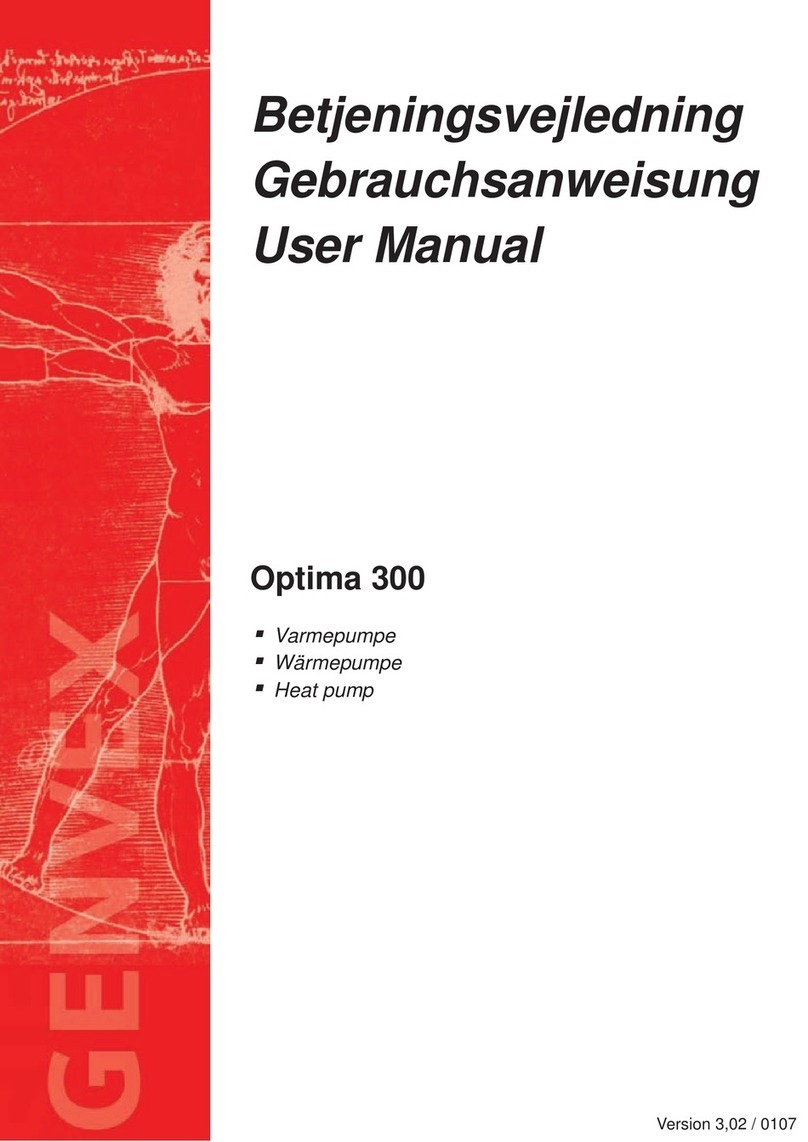
Genvex
Genvex Optima 300 User manual
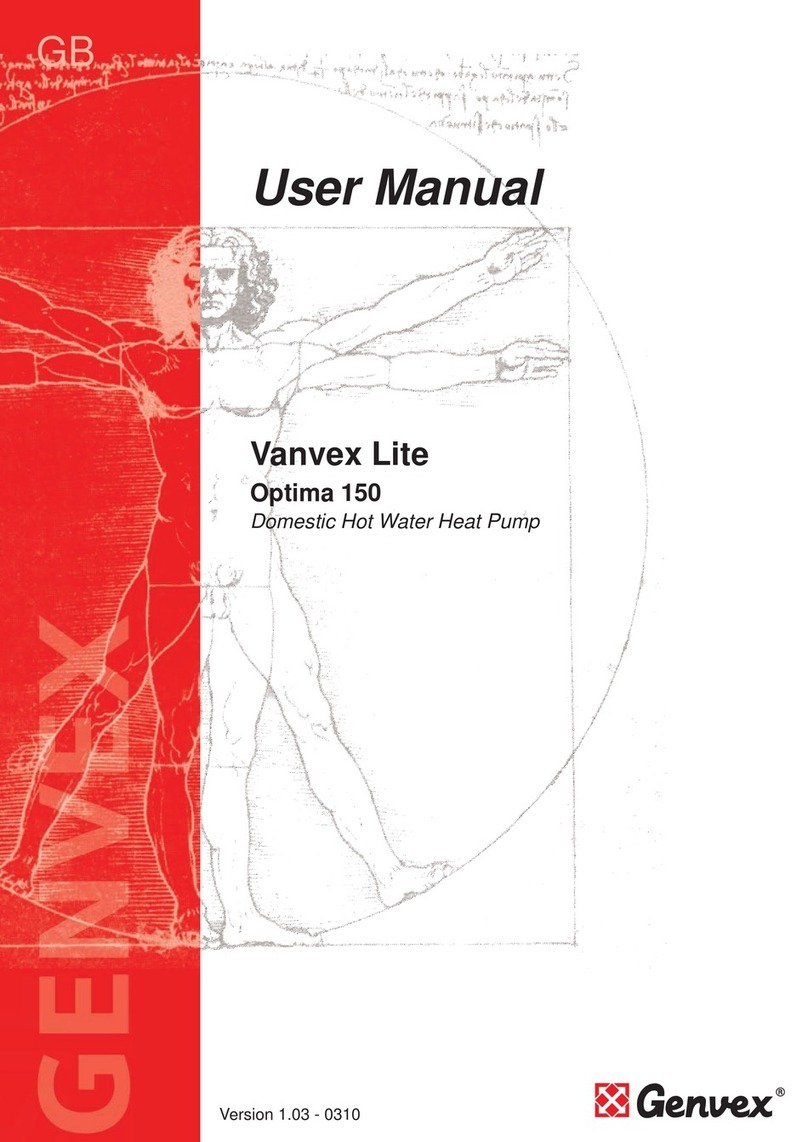
Genvex
Genvex Vanvex Lite Optima 150 User manual

Genvex
Genvex Combi 185 S User manual

Genvex
Genvex Combi 185 S User manual
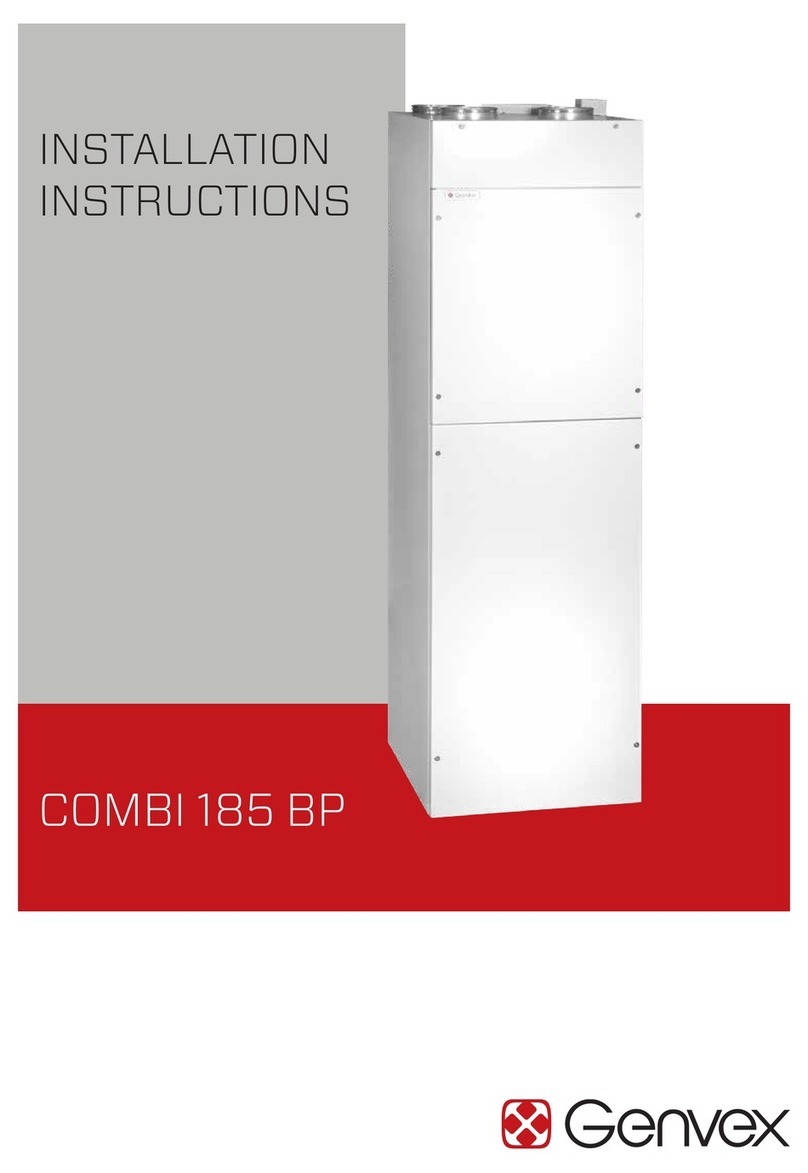
Genvex
Genvex COMBI 185 BP User manual
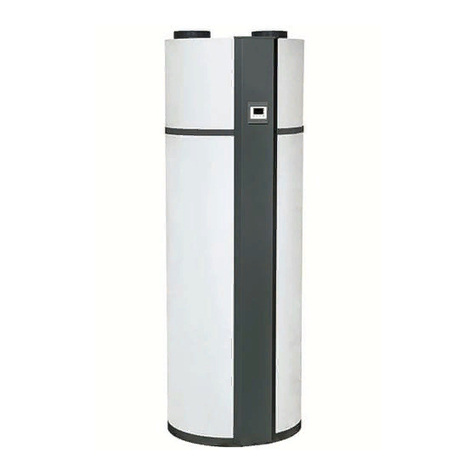
Genvex
Genvex Optima 155 User manual

Genvex
Genvex COMBI BLUELINE User manual
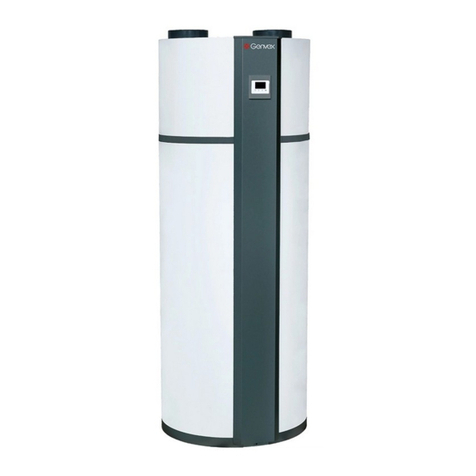
Genvex
Genvex Vanvex RS User manual
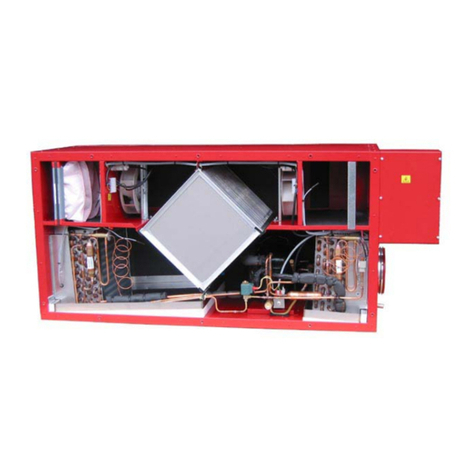
Genvex
Genvex GE 315 VP User manual
